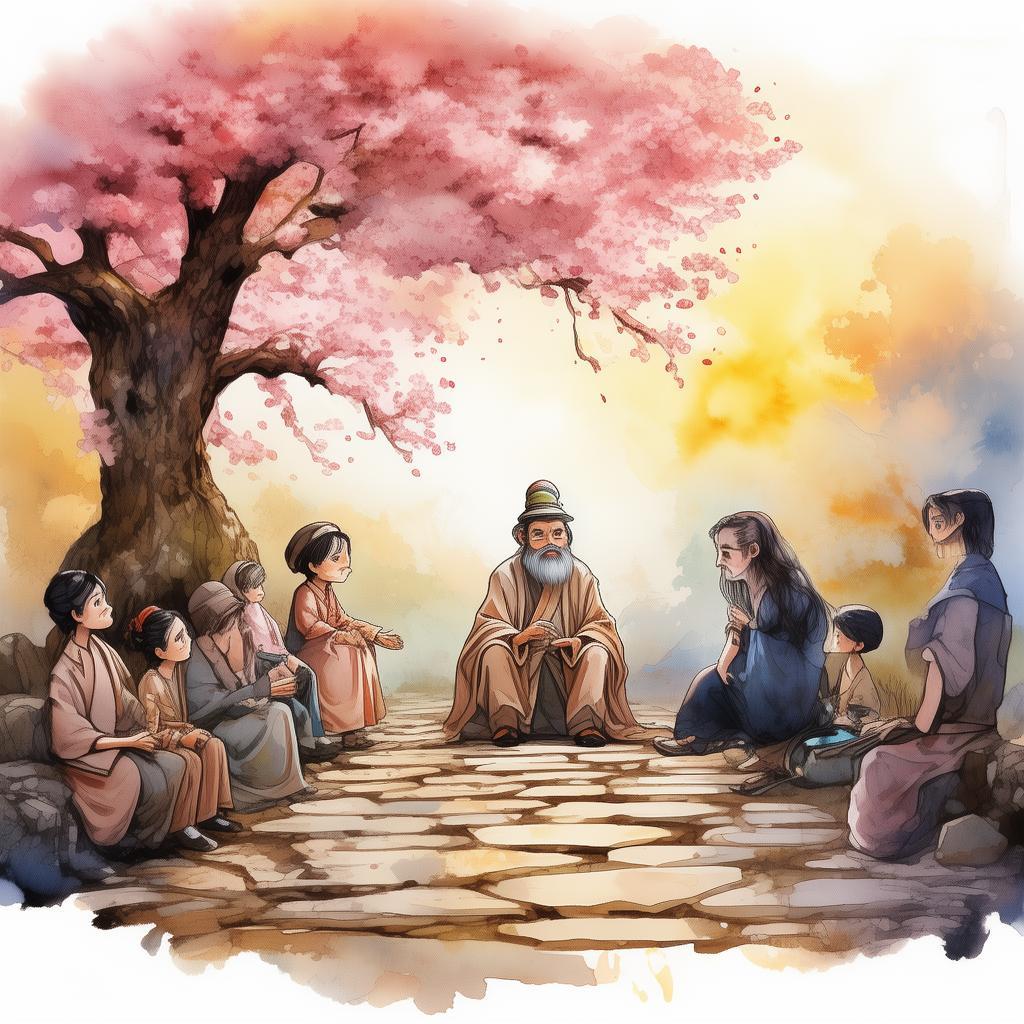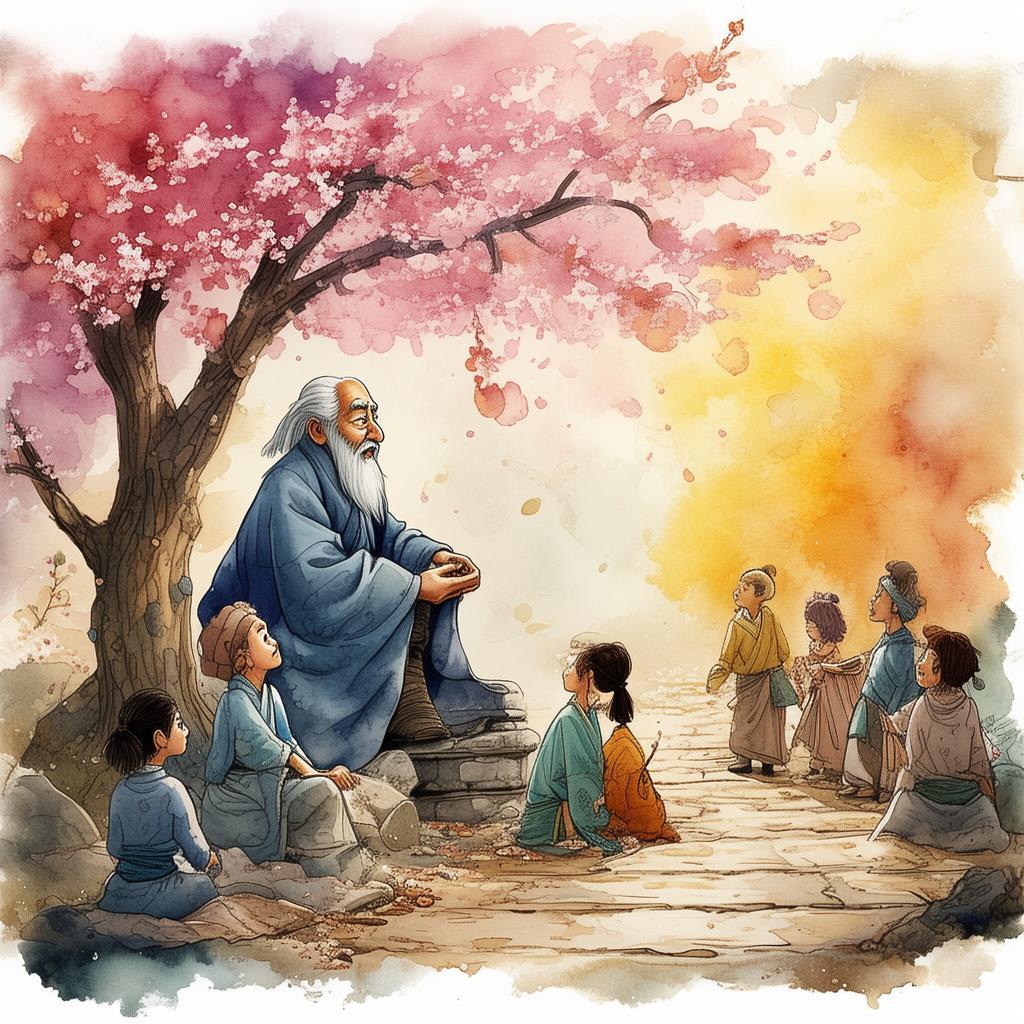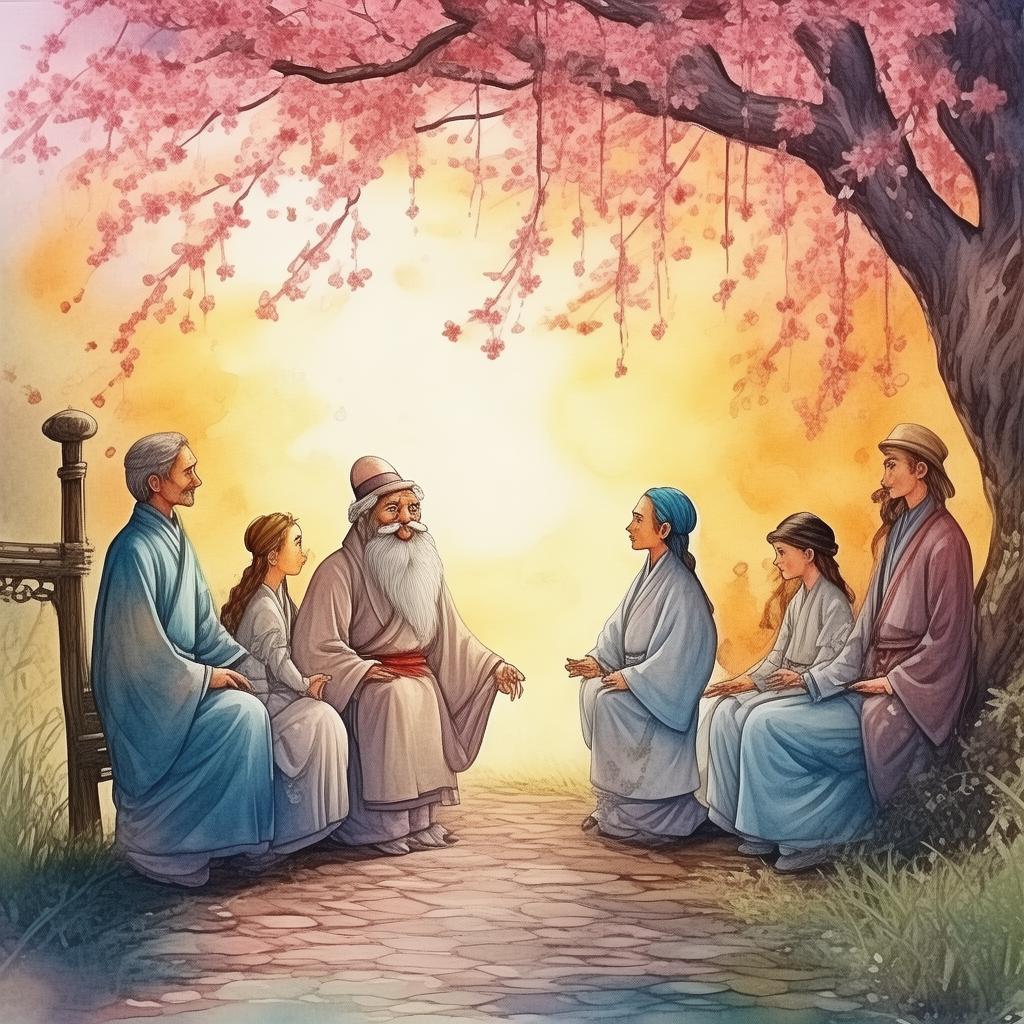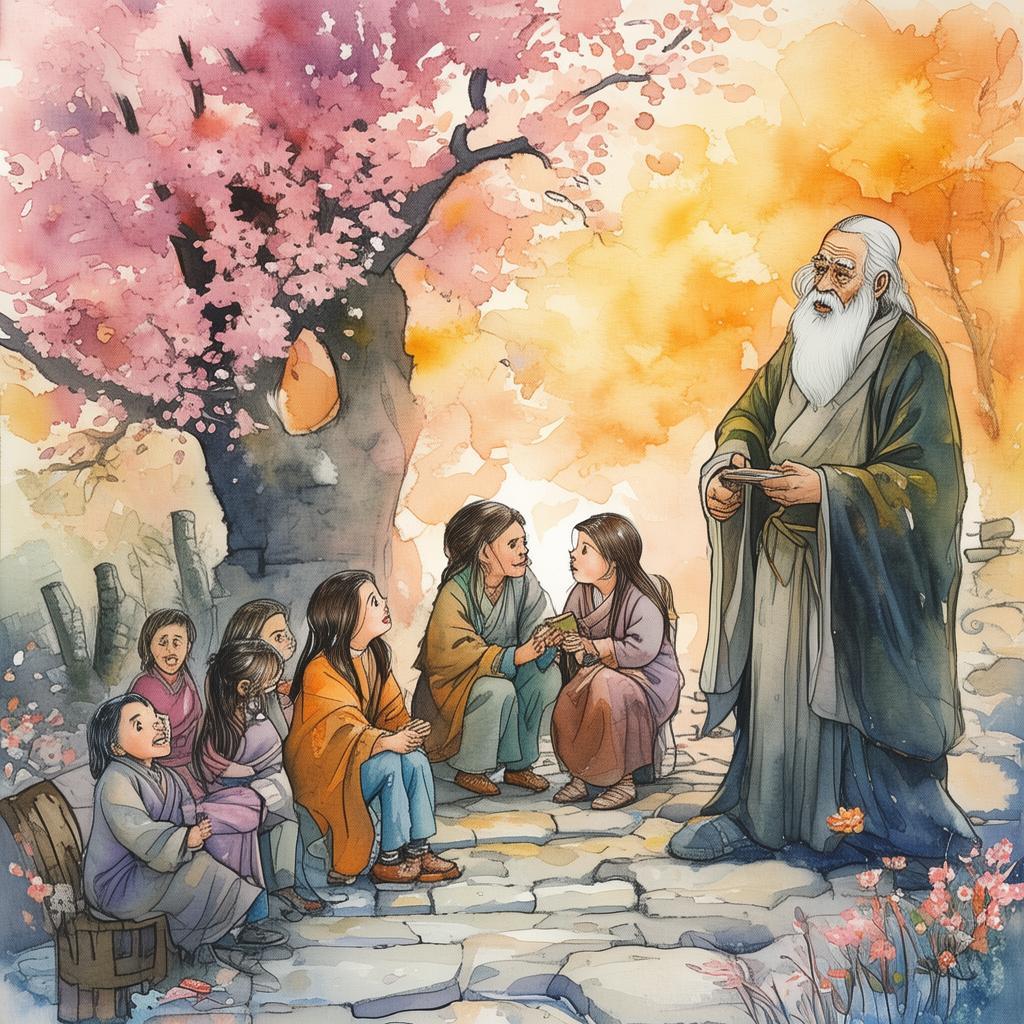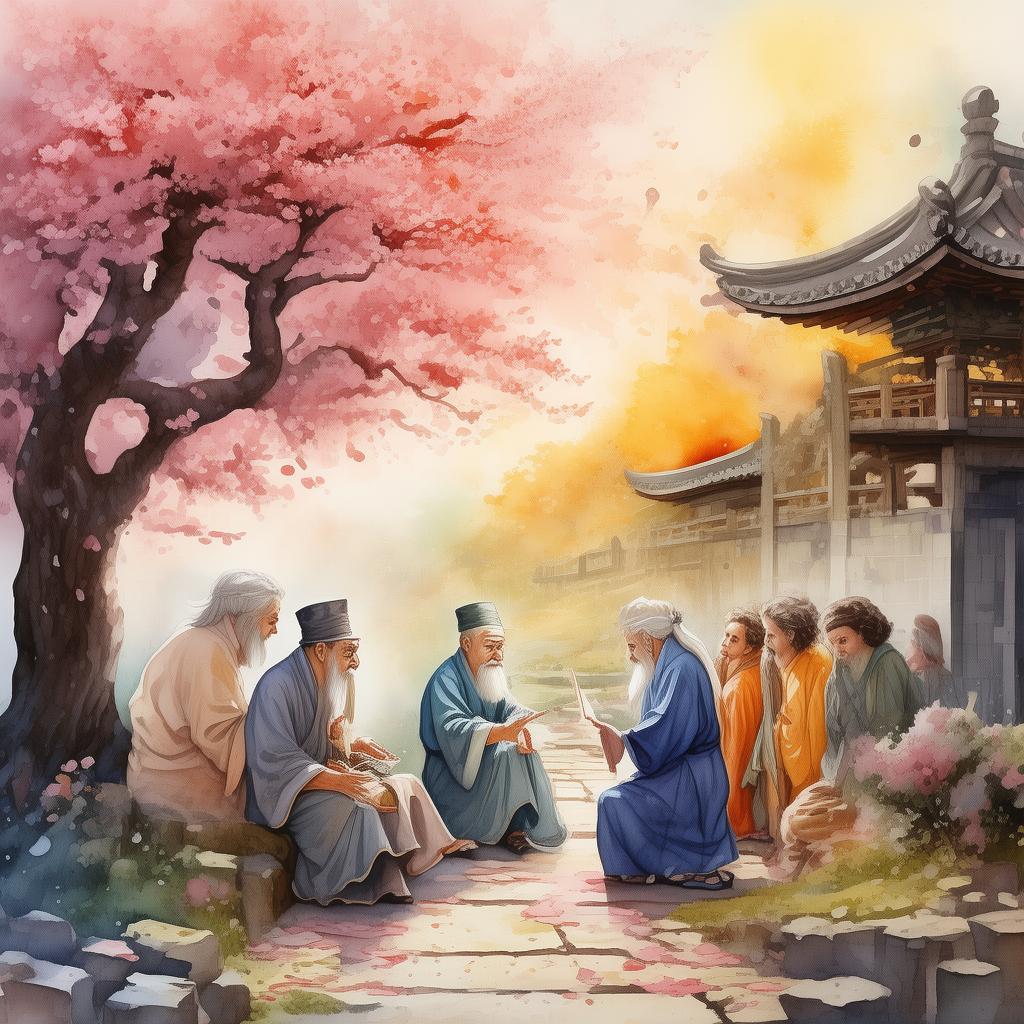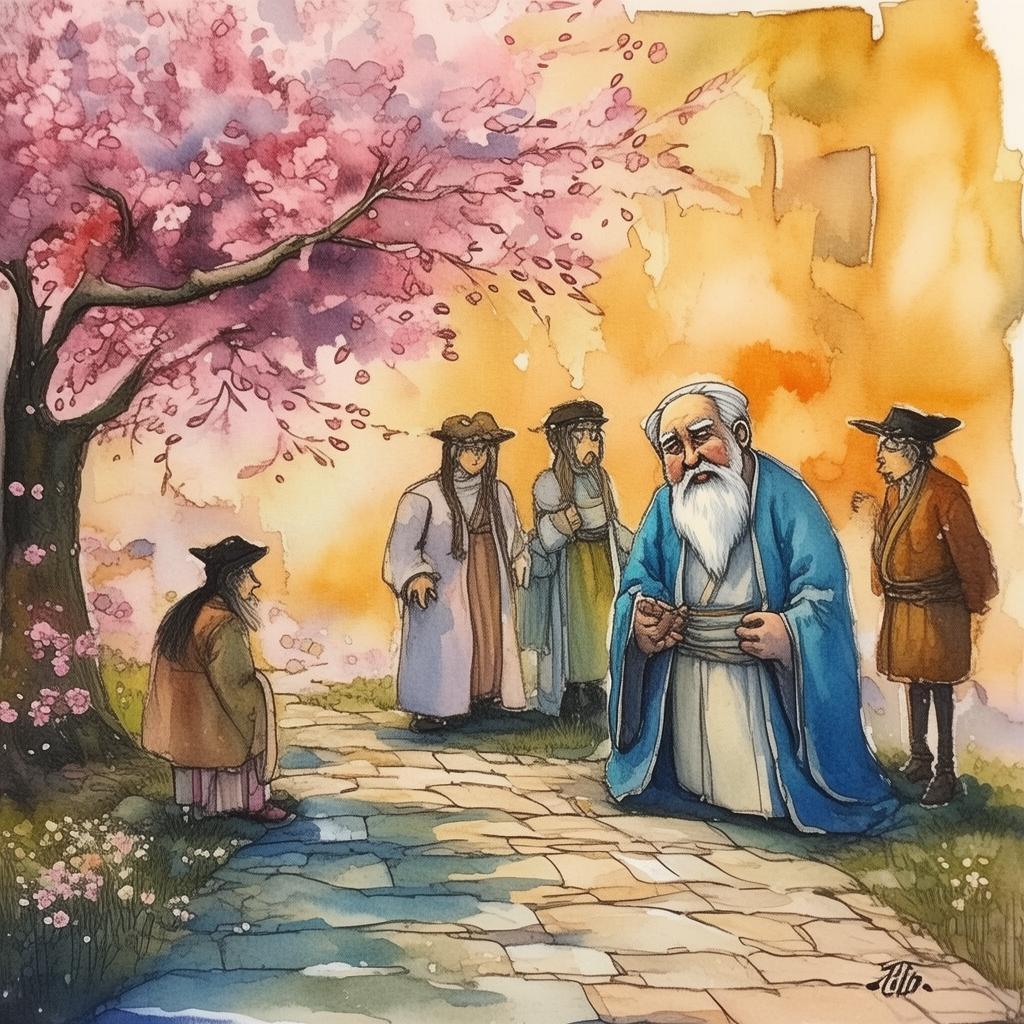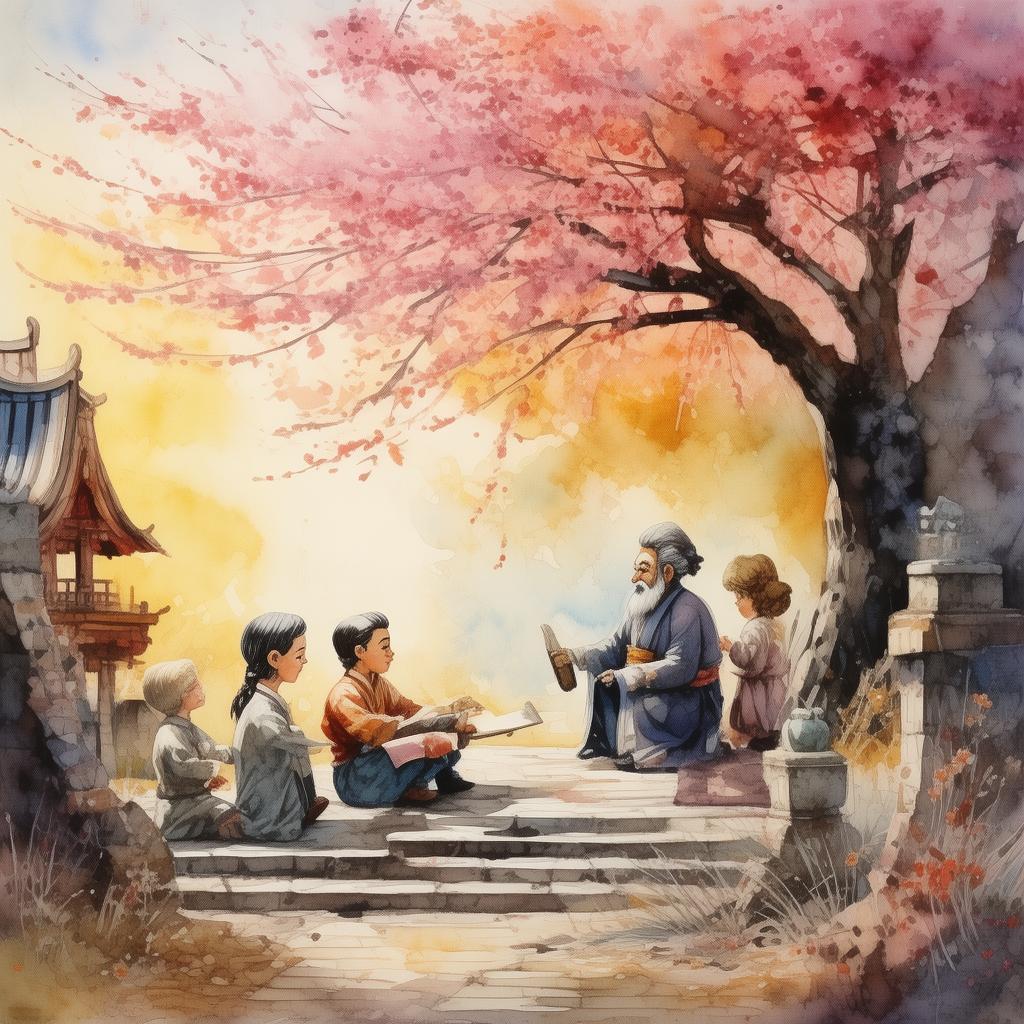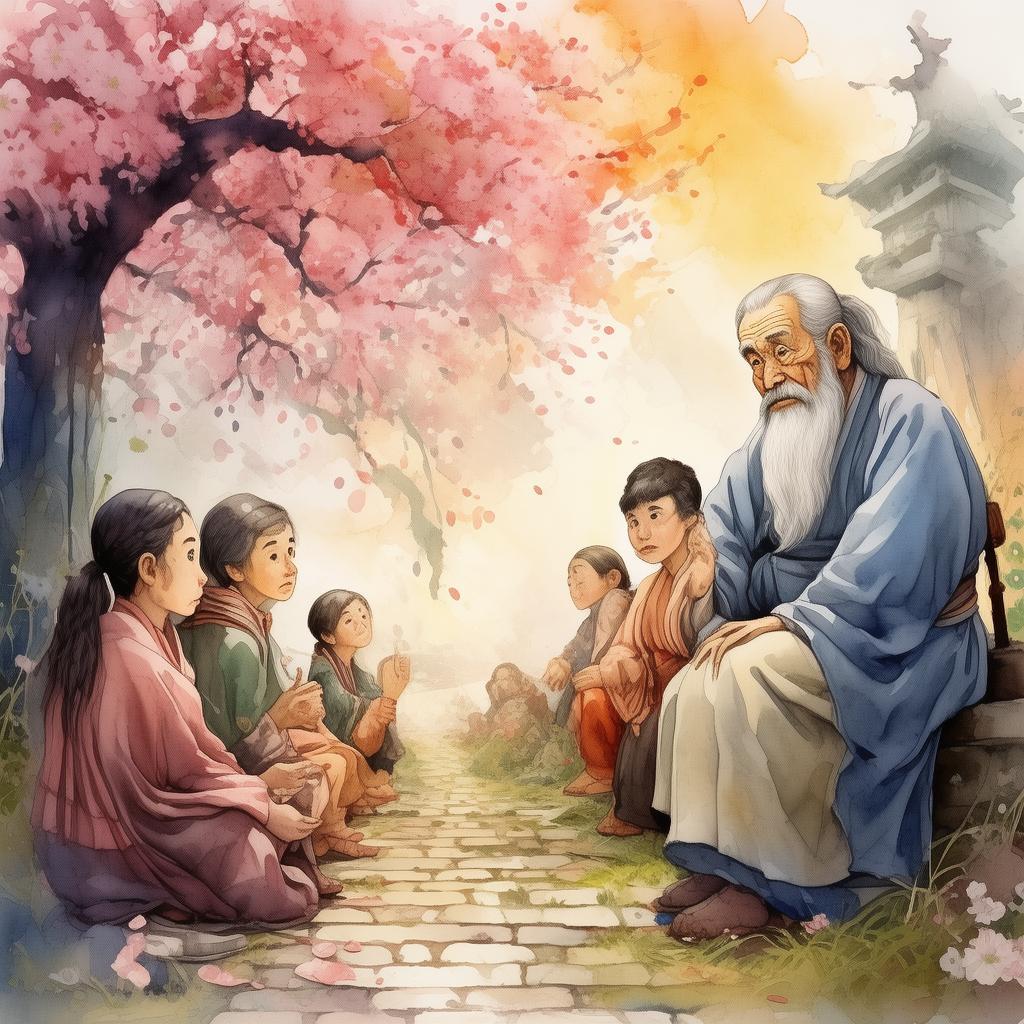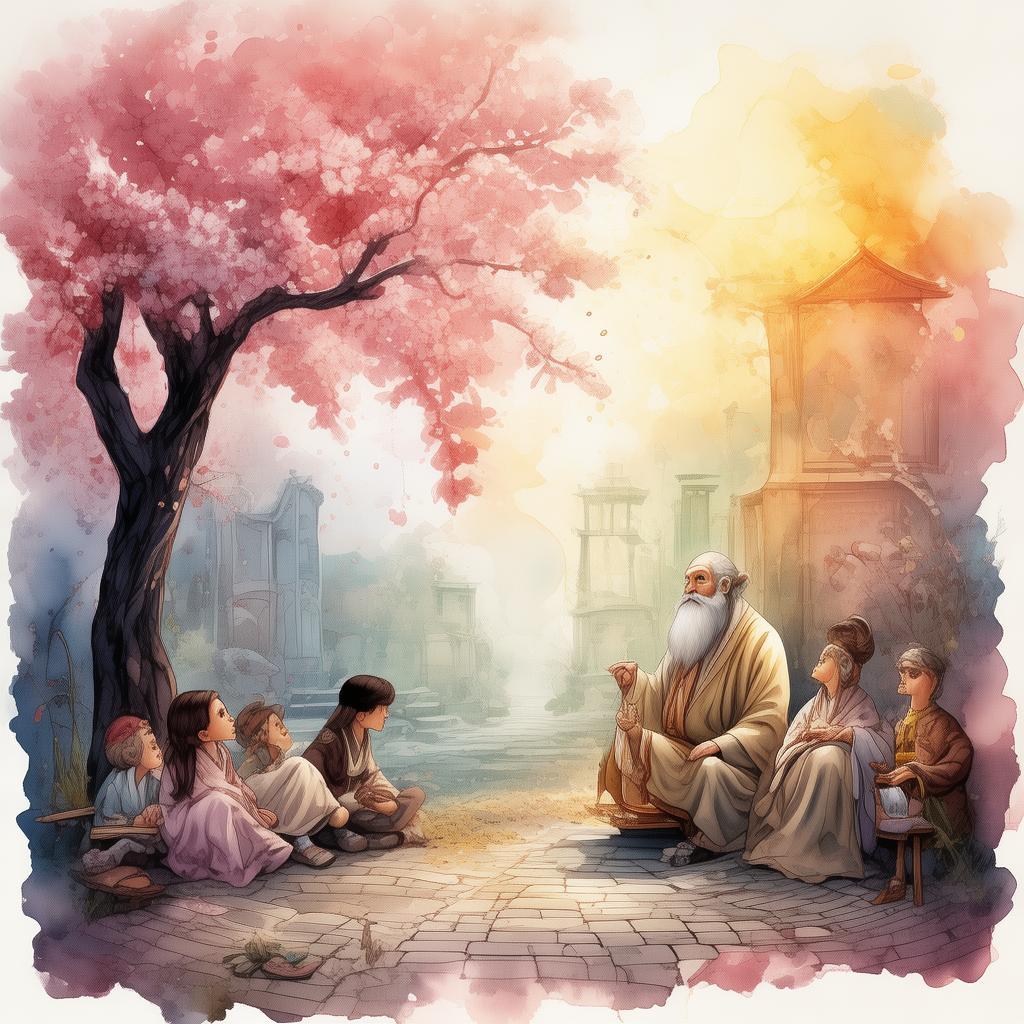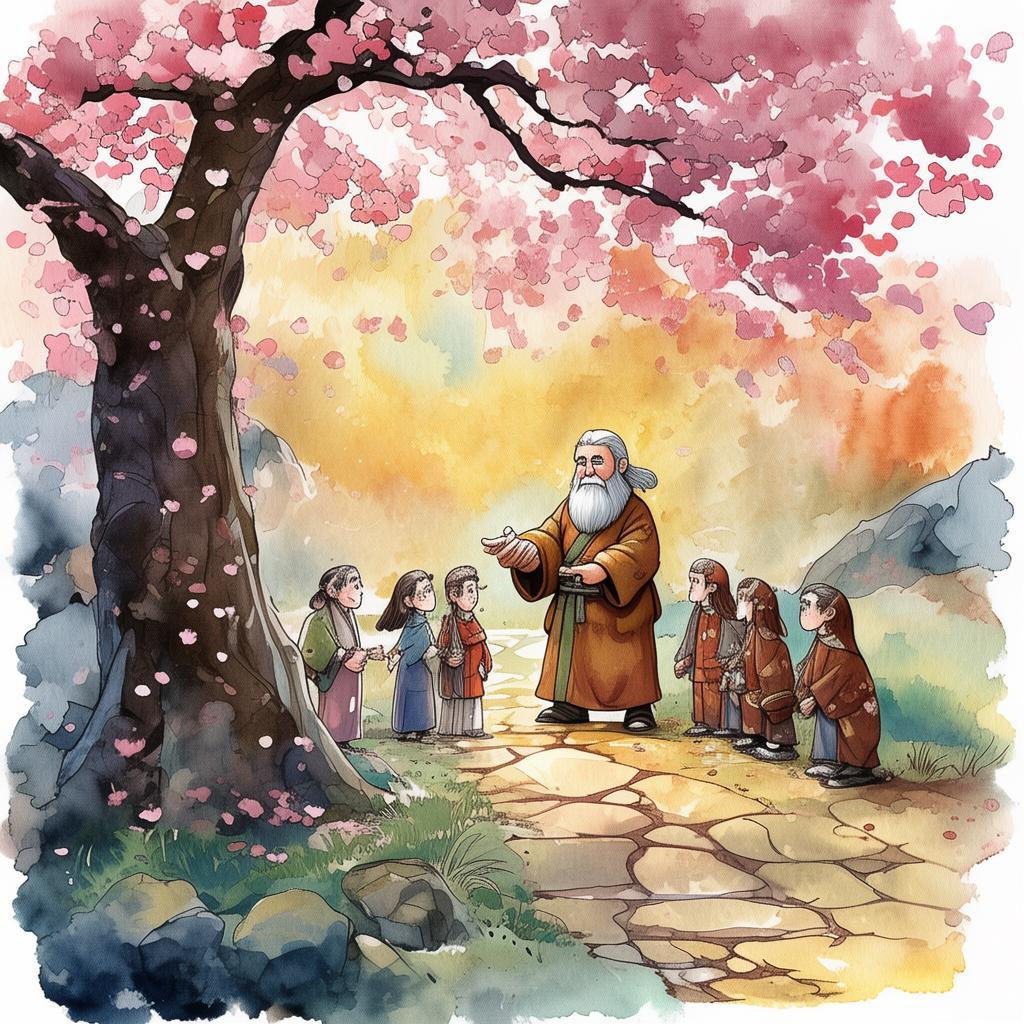The Cursed Carving: A Tale of the Vanishing Bird
In the quaint village of Jinglong, nestled between rolling hills and whispering bamboo groves, there lived a man named Lao Li. Lao Li was renowned not for his farming prowess or his knowledge of the land, but for his deft hands and keen eye that brought to life the wooden carvings of the gods and spirits that the villagers revered. His latest creation was a life-sized wooden crane, poised to grace the temple of the village deity, the God of Wisdom.
The villagers were abuzz with excitement. The temple was to be renovated, and Lao Li's crane was to be the centerpiece. It was said that the crane, carved from a single, ancient bough, had a soul within it, and it was this soul that gave the carving its life-like quality.
One moonlit night, as Lao Li worked on the final touches, he felt a strange presence in the room. The air grew thick and heavy, and he could hear the faintest whispers of a voice that seemed to come from the very wood of the crane. "I am the ancient bird of the sky," the voice intoned, "and I have been bound for centuries. Free me, and you shall be granted a wish."
Lao Li, in his haste to finish the crane, was driven by curiosity and the desire for recognition. Without a second thought, he carved a small opening in the crane's chest, releasing the bound spirit. The room was immediately filled with a blinding light, and when it faded, the crane had vanished, leaving behind only the opening Lao Li had carved.
The villagers were distraught. The crane was more than a mere decoration; it was a symbol of their faith and prosperity. Lao Li, too, was haunted by guilt and fear. The crane's disappearance had brought misfortune upon the village. Crops failed, and illness spread among the people. The villagers began to whisper about the cursed bird and the carver who had released it.
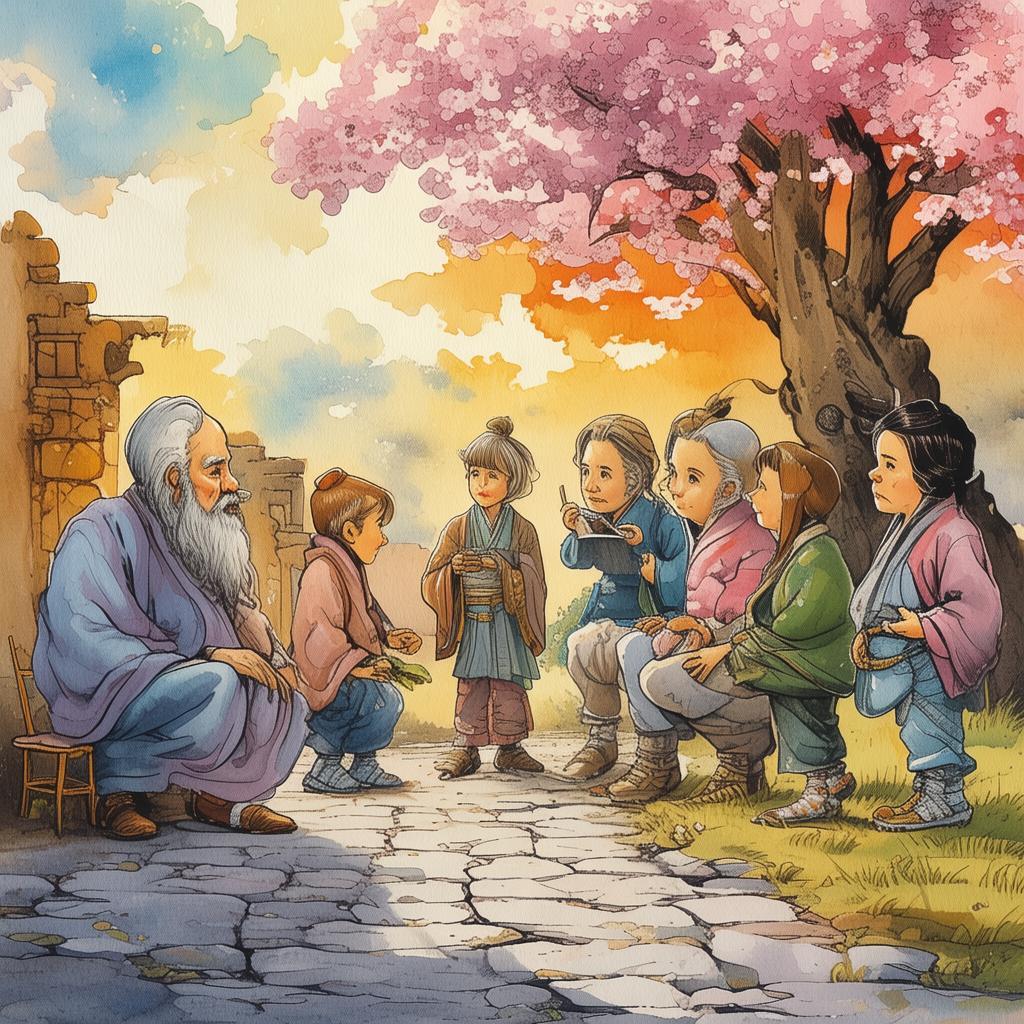
Desperate for redemption, Lao Li sought the help of the village elder, Master Wu. Master Wu was a wise man who had spent a lifetime studying the ancient texts and the ways of the spirits. He listened to Lao Li's tale and then led him to the ancient library, where the scrolls of the village's history were kept.
Inside the library, Master Wu found a scroll that spoke of a similar curse, placed upon a crane by a greedy carver who sought to possess its power. The scroll also contained a ritual to seal the curse and return the crane to its rightful place. The ritual required a sacrifice, a costly and dangerous endeavor.
Lao Li, determined to atone for his actions, agreed to the ritual. He gathered the necessary ingredients and prepared to make the sacrifice. As he stood before the temple, the villagers gathered around, their eyes filled with hope and fear.
The ritual was long and arduous, but it was successful. The spirit of the crane was sealed once more, and the villagers' misfortunes began to lift. Lao Li's name was cleared, and he was once again revered in the village.
The story of Lao Li and the cursed crane spread far and wide, serving as a cautionary tale about the dangers of greed and the importance of respecting the natural world. Lao Li, now known as the Sincere Carver, continued to carve the spirits of the land, but with a newfound respect for the magic that lay within the wood.
The village of Jinglong thrived once more, and the temple of the God of Wisdom stood as a testament to the power of redemption and the enduring bond between humans and the spirits of nature.
✨ Original Statement ✨
All articles published on this website (including but not limited to text, images, videos, and other content) are original or authorized for reposting and are protected by relevant laws. Without the explicit written permission of this website, no individual or organization may copy, modify, repost, or use the content for commercial purposes.
If you need to quote or cooperate, please contact this site for authorization. We reserve the right to pursue legal responsibility for any unauthorized use.
Hereby declared.
